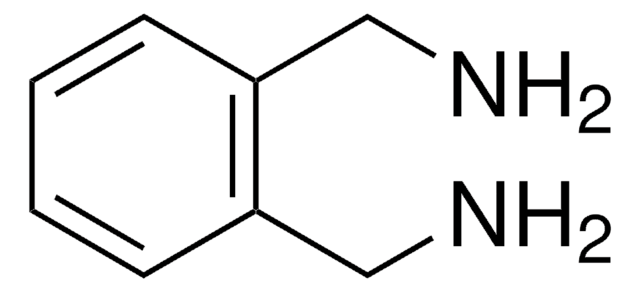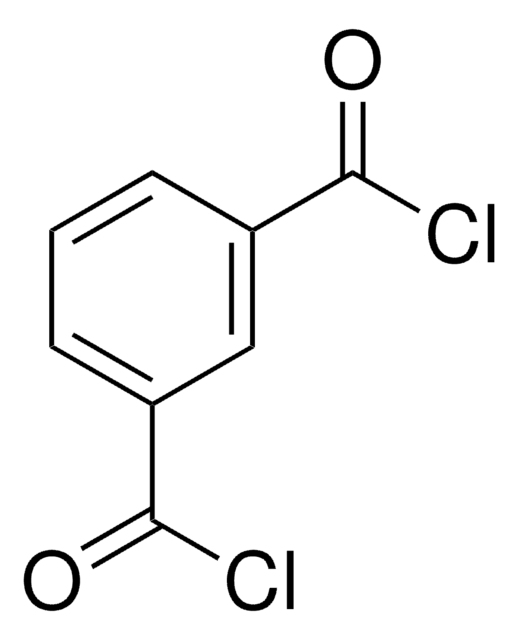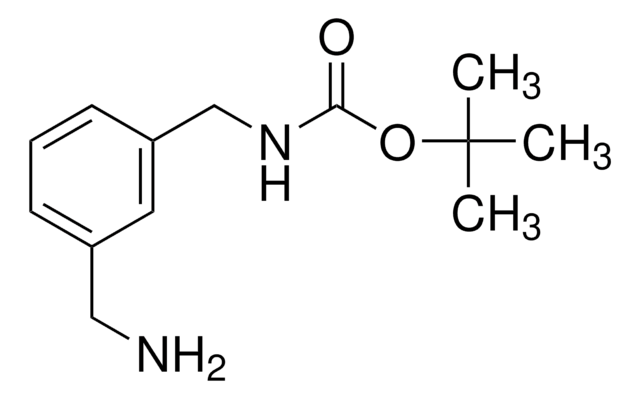279633
p-Xylylenediamine
99%
Sinónimos:
1,4-Bis(aminomethyl)benzene, α,α′-Diamino-p-xylene
About This Item
Productos recomendados
Nivel de calidad
Ensayo
99%
Formulario
solid
bp
230 °C/10 mmHg (lit.)
mp
60-63 °C (lit.)
cadena SMILES
NCc1ccc(CN)cc1
InChI
1S/C8H12N2/c9-5-7-1-2-8(6-10)4-3-7/h1-4H,5-6,9-10H2
Clave InChI
ISKQADXMHQSTHK-UHFFFAOYSA-N
¿Está buscando productos similares? Visita Guía de comparación de productos
Categorías relacionadas
Descripción general
Aplicación
- As a monomer to synthesize ultra heat-resistant thermoplastic polyamide elastomers suitable for high-temperature applications. It contributes to increased tensile strength, toughness, and Young′s modulus of the elastomer, thereby enhancing its overall mechanical strength.
- As a cross-linking agent to prepare solvent resistant high performance nanofiltration membranes. p-Xylylenediamine facilitates superior separation performance and stability for N,N-dimethylformamide (DMF) solution.
- As a dendrimer core to synthesize stimuli responsive nanocarriers for cancer drug delivery.
- As a capping agent to prepare fluorescent organic–inorganic hybrid CH3NH3PbBr3 nanocrystals to fabricate 3D-printed paper-based microfluidic optical sensor for naked-eye detection of picric acid.
Palabra de señalización
Danger
Frases de peligro
Consejos de prudencia
Clasificaciones de peligro
Skin Corr. 1B
Código de clase de almacenamiento
8A - Combustible corrosive hazardous materials
Clase de riesgo para el agua (WGK)
WGK 3
Punto de inflamabilidad (°F)
Not applicable
Punto de inflamabilidad (°C)
Not applicable
Equipo de protección personal
Eyeshields, Faceshields, Gloves, type P3 (EN 143) respirator cartridges
Elija entre una de las versiones más recientes:
Certificados de análisis (COA)
¿No ve la versión correcta?
Si necesita una versión concreta, puede buscar un certificado específico por el número de lote.
¿Ya tiene este producto?
Encuentre la documentación para los productos que ha comprado recientemente en la Biblioteca de documentos.
Los clientes también vieron
Nuestro equipo de científicos tiene experiencia en todas las áreas de investigación: Ciencias de la vida, Ciencia de los materiales, Síntesis química, Cromatografía, Analítica y muchas otras.
Póngase en contacto con el Servicio técnico













